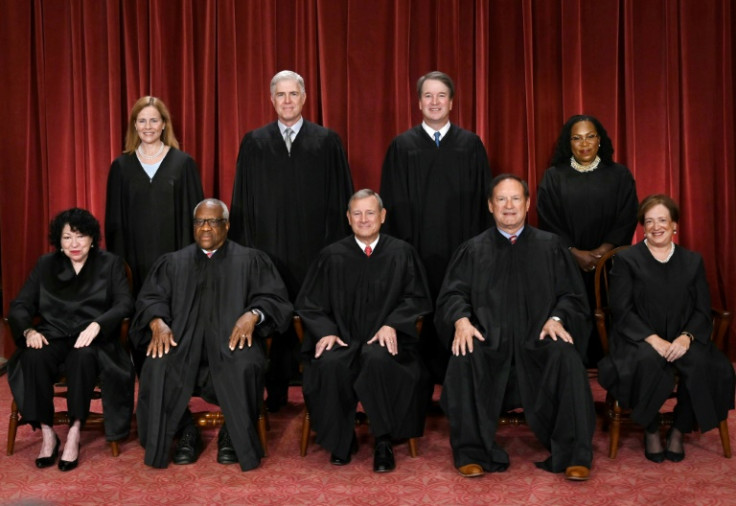Prince, Andy Warhol Feature In Supreme Court Copyright Case

Pop music and art converge on the US Supreme Court on Wednesday as it hears whether a photographer should be compensated for a picture she took of Prince used in a work by Andy Warhol.
The case, Andy Warhol Foundation for the Visual Arts v. Goldsmith, could have far-reaching implications for US copyright law and the art world.
It stems from a black-and-white picture taken in 1981 by celebrity photographer Lynn Goldsmith of Prince, a then up-and-coming young musician from Minneapolis.
In 1984, as Prince's "Purple Rain" album was taking off, Vanity Fair asked Warhol to provide an image to accompany a story on the musician in the glossy magazine.
Warhol used one of Goldsmith's photographs to produce a silk screen print image of Prince with a purple face in the familiar brightly colored style the artist made famous with his portraits of Marilyn Monroe.
Goldsmith received credit as the photographer and was paid $400 for the rights for one-time use.
After Prince died in 2016, The Andy Warhol Foundation, set up after the artist's death in 1987, licensed another image of the musician made by Warhol from the Goldsmith photo to Vanity Fair publisher Conde Nast.
That portrait -- Warhol had actually made 16 in total -- featured Prince with an orange face rather than a purple face.
Conde Nast paid the Foundation a $10,250 licensing fee.
Goldsmith did not receive anything and is claiming that her copyright on the original photo was infringed.
"This time, no credit or payment to Goldsmith," her lawyers said in a brief. "Copyright law cannot possibly prescribe one rule for purple silkscreens and another for orange ones."
The Warhol Foundation countered by arguing that Warhol's "Prince Series" is "transformative" is and therefore not infringing on any copyright.
"Goldsmith is asking for something remarkable here," the Foundation said in its brief.
"She wants the Court to hold that the works of Andy Warhol -- universally recognized as a creative genius who pioneered the twentieth century Pop Art movement -- are not transformative, and therefore are illegal."
Two lower courts issued split rulings, sending the case to the Supreme Court.
In 2019, a US District Court judge in Manhattan ruled in favor of the Warhol Foundation.
"The Prince Series works can reasonably be perceived to have transformed Prince from a vulnerable, uncomfortable person to an iconic, larger-than-life figure," the judge said.
"The humanity Prince embodies in Goldsmith's photograph is gone," the judge said. "Moreover, each Prince series work is immediately recognizable as a 'Warhol' rather than as a photograph of Prince."
An appeals court disagreed last year, however, saying "the district judge should not assume the role of art critic and seek to ascertain the intent behind or meaning of the works at issue."
What counts, the court said, is whether the new work "remains both recognizably deriving from, and retaining the essential elements of, its source material.
It said the Warhol series "retains the essential elements of the Goldsmith photograph without significantly adding to or altering those elements."
After hearing oral arguments on Wednesday, the nine judges on the Supreme Court will decide whether Warhol's work is transformative, and deserving of protection, or infringing.
They will issue their ruling by June 30.


© Copyright AFP 2024. All rights reserved.







